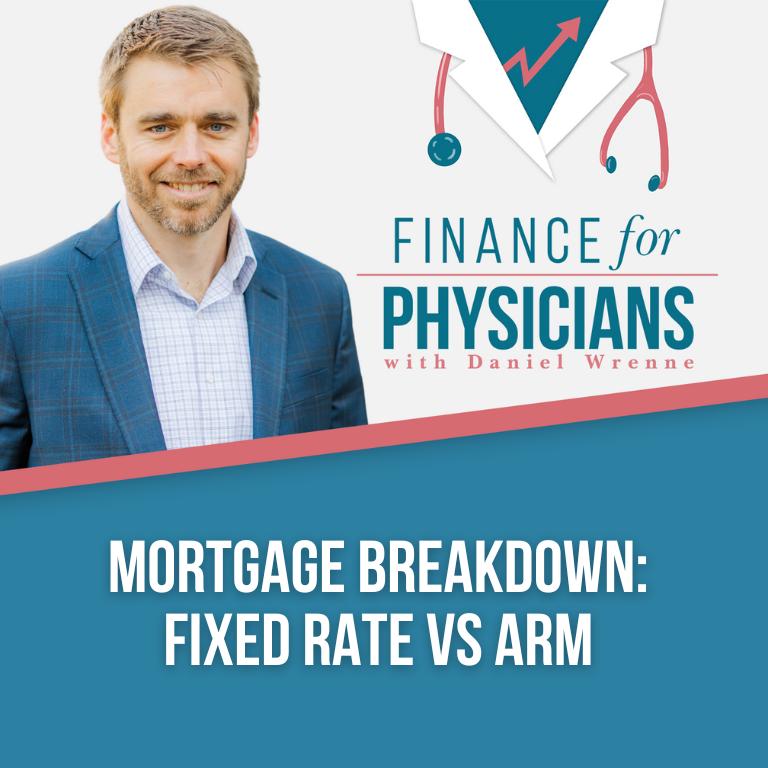For many physicians, one of the biggest financial milestones in life is buying a home. There is a feeling of accomplishment that comes with a successful home purchase, as well as a feeling of freedom and security.
However, since a home purchase is likely one of the largest purchases you will make, it’s important to understand your options and choose what works best for you. Odds are you don’t have enough money to pay for the home in cash, therefore you’re considering doctor loan options. One of the decisions you will need to make is whether to get a fixed rate mortgage or an adjustable rate mortgage (ARM).
Many lenders have special programs for physicians and other type doctors (aka The Doctor loan). The doctor loan offers special terms such as 0% down, no PMI and more flexible underwriting for physicians. These loans can be structured as an ARM or a fixed rate loan. For a more comprehensive view on the doctor loan, make sure and check out our complete guide to physician mortgage loans.
Doctor Mortgage: Fixed Rate Mortgage
The fixed rate doctor mortgage is pretty straightforward. The interest rate is locked in for the entire repayment period (typically 15 or 30 years but some lenders offer custom periods). The biggest advantage to a fixed rate mortgage is that you lock in an interest rate for the duration of your loan and therefore remove any risk associated with increasing interest rates. Right now, with the Federal Reserve set to continue increasing interest rates, and with Treasury yields expected to start rising, mortgage rates are also expected to increase. If you have a fixed rate mortgage, you don’t have to worry about seeing an increase in your interest rate – or your payment.
A downside to a fixed rate mortgage is that you don’t have the ability to take advantage of falling interest rates. If rates fall, you need to refinance your mortgage in order to lower your interest rate and payment.
Doctor Mortgage: What is an ARM?
The ARM mortgageIn most cases, the initial interest rate you see with an ARM is lower than what you would get with a fixed rate mortgage. This is because there is always the chance that mortgage rates will go up and the lender will be able to charge you more for the loan.
If rates head lower, there is a chance that you will get a break in the form of a lower mortgage payment. As rates rise, though, you will see a higher monthly mortgage payment. Most lenders offer terms that limit the number of payment increases you can see in a specific period of time, as well as an overall cap on your rate. However, that doesn’t change the fact that you can still see increases in your payments.
What About Hybrid ARMs?
Many physicians who expect to make more money a few years after the initial home purchase like to use hybrid ARMs. These ARMs guarantee a set interest rate for 5, 7, or 10 years. Just before the ARM is expected to become variable, the home buyer can refinance to a fixed rate for the remainder of the term. If you like the idea of a lower rate to start, and you are confident that your financial situation will improve before the rate re-sets, this can be a viable solution.
Still, it’s important to understand the risks associated with choosing a hybrid ARM. The biggest risk is that home values could drop and when you are ready to refinance your home, you might not be able to. This was one of the issues associated with the recent mortgage market crash. Many homebuyers had taken advantage of low-rate hybrid ARMs, but were unprepared for higher rates later. They couldn’t refinance to fixed rate loans because home values had dropped and they didn’t have enough equity.
Before you decide to buy, think about which financing arrangement is likely to work best for you. Honestly evaluate whether or not you can handle an increase in your mortgage pavement as interest rates go up. The last few years have been great for ARMs, due to the low-rate environment. Now that the economy is picking up and interest rates are rising, many professionals might find it more advantageous to lock in a fixed interest rate.
